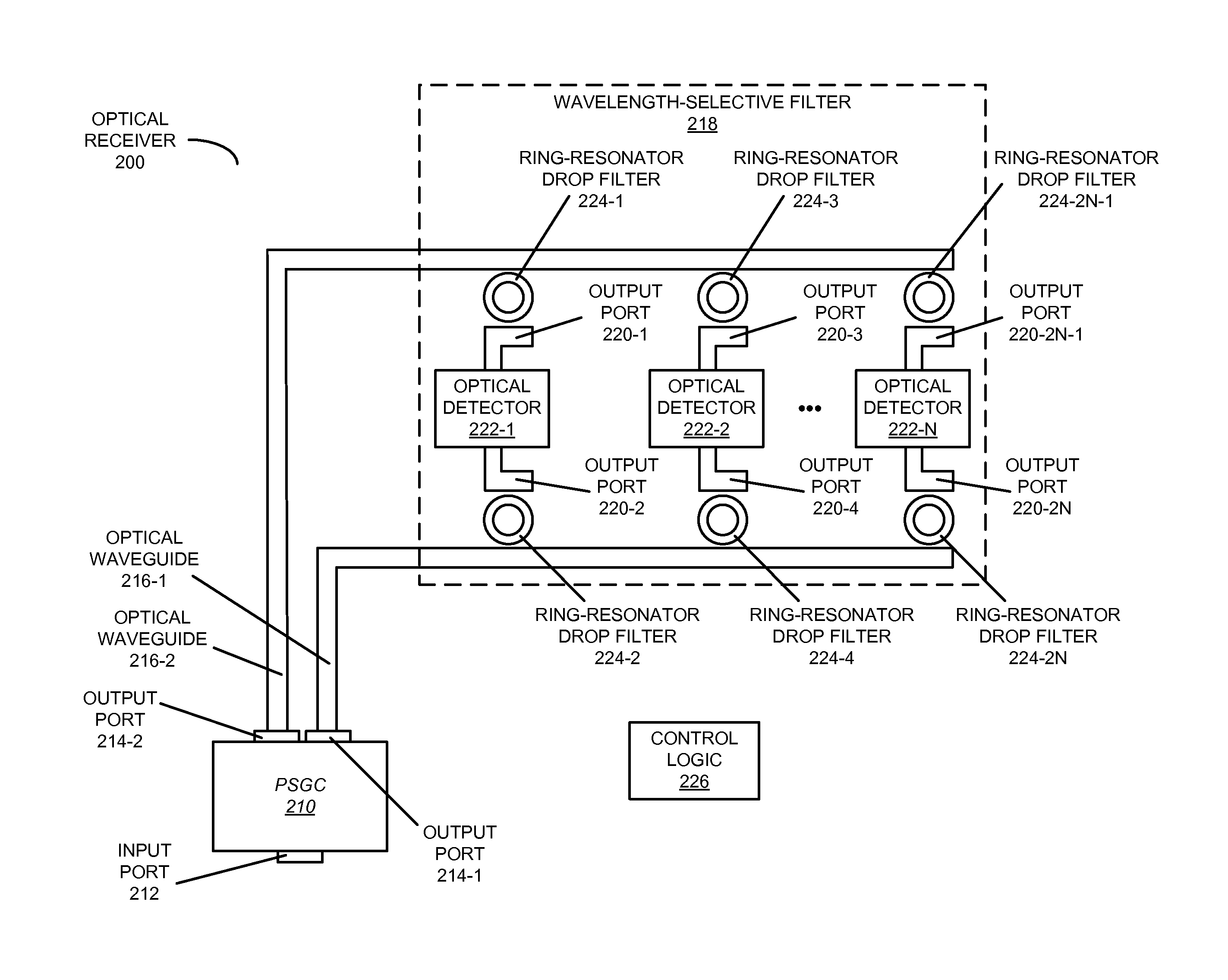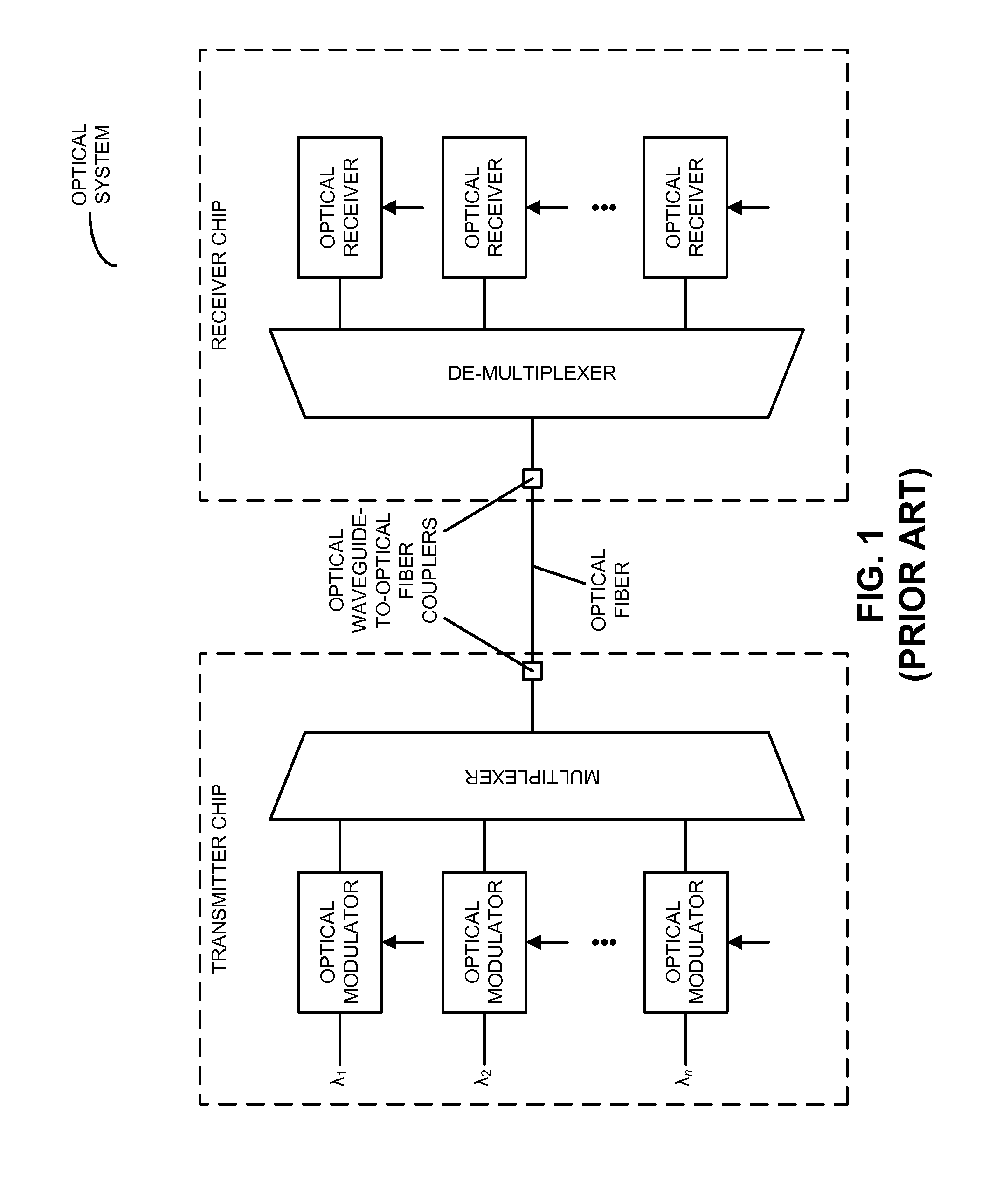Polarization-insensitive silicon-phototonic optical receiver
a technology of optical receivers and silicon phototonics, applied in the direction of optical waveguide light guides, instruments, optical light guides, etc., can solve the problems of affecting the design of integrated circuits, and affecting the performance of the optical receiver
- Summary
- Abstract
- Description
- Claims
- Application Information
AI Technical Summary
Benefits of technology
Problems solved by technology
Method used
Image
Examples
Embodiment Construction
[0027]Embodiments of an optical receiver, a system that includes the optical receiver, and a method for providing output optical signals are described. Using silicon photonic components that support a single polarization, the output of this optical receiver is independent of the polarization of an optical signal. In particular, using a polarization-diversity technique, the two orthogonal polarizations in a single-mode optical fiber are split in two and processed independently. For example, the two optical signals may be provided by a polarizing splitting grating coupler. Subsequently, a wavelength channel in the two optical signals is selected using a wavelength-selective filter (for example, using a ring resonator or an echelle grating) and combined at an optical detector (such as a photo-detector) to achieve polarization-independent operation.
[0028]By providing polarization-independent operation, the optical receiver may allow low-cost single-mode optical fibers and low-cost silic...
PUM
 Login to View More
Login to View More Abstract
Description
Claims
Application Information
 Login to View More
Login to View More - R&D
- Intellectual Property
- Life Sciences
- Materials
- Tech Scout
- Unparalleled Data Quality
- Higher Quality Content
- 60% Fewer Hallucinations
Browse by: Latest US Patents, China's latest patents, Technical Efficacy Thesaurus, Application Domain, Technology Topic, Popular Technical Reports.
© 2025 PatSnap. All rights reserved.Legal|Privacy policy|Modern Slavery Act Transparency Statement|Sitemap|About US| Contact US: help@patsnap.com



